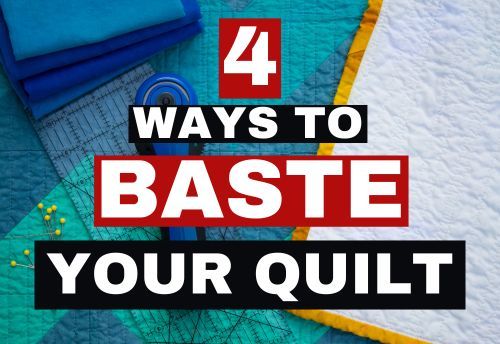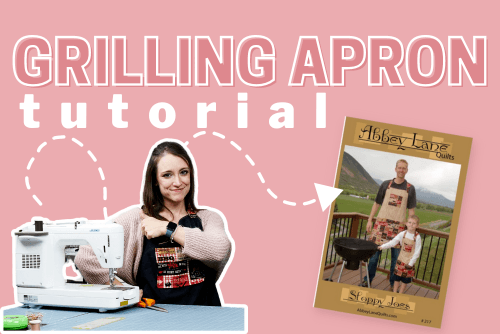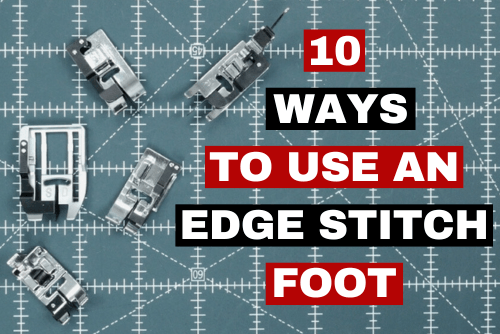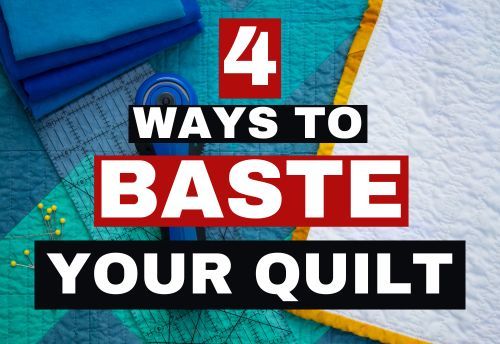
WHAT IS QUILT BASTING?
Basting is an essential step in the quilting process that secures the layers of the quilt sandwich together before being sewn. Specifically, basting helps to prevent the layers from shifting during quilting, ensuring that the finished quilt looks neat and professional. There are several ways to baste a quilt, including using a basting stitch, curved pins, glue, and a basting spray.
This blog will discuss these techniques in detail to help you choose the best method for your quilt.
STITCH BASTING
The first method of basting a quilt is using a basting stitch. This method involves sewing long stitches through all layers of the quilt sandwich, securing them in place.
To do this:
- Set your stitch length to its max measurement. Doing so will make removing your stitching line easier when you've finished quilting.
- Sew the basting stitches about 1/4 inch from the edge of the quilt, working in rows from one end to the other. Do not backstitch or sew a locking stitch, as these lines are meant to be temporary.
- Remove the pins as you go to prevent them from interfering with the sewing machine.
Helpful Knowledge: A walking foot attachment is recommended when sewing a basting stitch. The walking foot will help keep the layers of the quilt from shifting while you baste and quilt. However, if you do not have one, Sewing Parts Online is a great place to find a high-quality walking foot for your specific make + model.
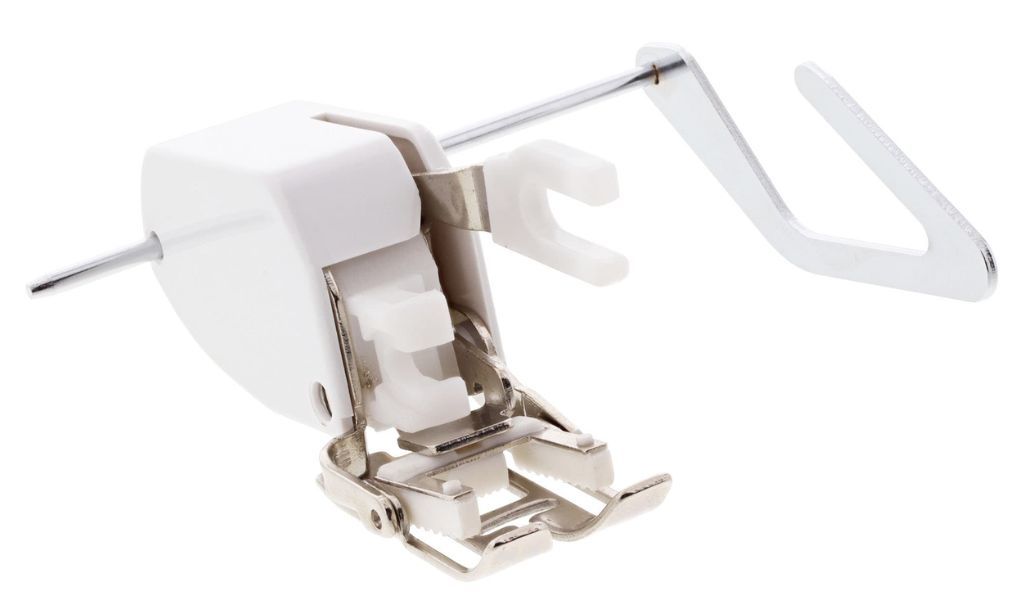
Answered: What is a walking foot, and how do you use it?
What's the downside of stitch-basting your quilt? Some quilters prefer to avoid unnecessary needle holes in their quilt, especially if they don't use a stitch-dense design to cover them up. Although the following method also leaves punctures behind, it's far less, and you have total control over how many wind up in your final product.
BASTING WITH SAFETY PINS
The second method of basting a quilt is by using curved safety pins. This method involves placing pins through all layers of the quilt sandwich, holding them together while you quilt. The pins should be spaced about a hand's width apart to keep the layers together evenly.
Please note using curved pins that are the appropriate size for your quilt is essential. While you can pin-baste with straight and regular safety pins, they tend to distort your fabric and can be difficult to close once secured to your quilt sandwich. A 1-1/2 inch curved pin is typically suitable for most quilts.
What's the downside of stitch-basting your quilt? - First, it adds quite a bit of time to your prepping stage. Plus, this method is the most likely to result in finger pricks (ouch!), but trust us—this is a tried and true technique and probably the most popular of the four.
Another tip, even if you pin-baste, you'll still want to sew a basting stitch around the border of your quilt about a 1/4" away from the edge.
Helpful Knowledge: You'll often see pins called "Size 1" or "Size 2". Size 1 pins are 1-1/16" long, and size 2 pins are 1-1/2" long. Although we recommend using size 2 for most quilts, size 1 will work in a pinch and might even be a better option if you need to baste a quilt that is small, such as a table runner or bowl cozy.

Bohin Quilter's Curved Safety Pins, 1-1/2" (65pk)
SPO Tip: When using curved pins, using a high-quality brand is helpful to ensure that the pins won't rust or break over time. Our favorite curved safety pins for quilting are Bohin Quilter's Curved Safety Pins, but the Singer Curved Safety Pins in a Flower Case work well, too, if you are on a budget.
USING BASTING GLUE
The third method of basting a quilt is by using basting glue. This method involves applying a temporary adhesive to the back of the quilt top and attaching it to the batting and backing. Basting glue is an excellent choice for those who want to avoid dealing with pins or stitching. Glue basting can be a real time-saving technique, but there are some things to keep in mind before you proceed with this technique:
- Using non-toxic and non-permanent basting glue ensures it won't damage your fabric over time.
- When using basting glue, it's crucial to use a chrome-plated or non-stick sewing machine needle to prevent the needle from getting hot and the adhesive from gumming up your needle. Both can cause skipped stitches, tension issues, and thread breakage.
- It would be best to wait for the glue to dry completely before sewing to avoid trouble. Some glues can be heat-set to speed up drying time, but read the instructions on the packaging before busting out your iron.

Glue Baste-It (2oz), Roxanne International, #RX-GL2
Helpful Knowledge: Have issues with tension while making Free Motion Quilting? Try bumping your top tension up to a 6 or 7. FMQ can cause the bottom thread to have more tension than usual. For more information on free-motion tips and tricks, check out Aurifil's Master Educator Karen Miller's class on Free Motion Quilting from SewCreative LIVE Christmas 2022!
BASTING WITH A SPRAY ADHESIVE
The fourth method of basting a quilt is by using a basting spray. This method involves applying a temporary adhesive to the batting and attaching it to the backing and quilt top. Basting spray is an excellent choice for those who want a quick and easy method of basting a quilt. It's essential to use a high-quality basting spray to ensure that it won't damage your fabric over time.
SPO Tip: We recommend avoiding commercial-strength adhesives you can purchase at the hardware store when you baste a quilt. While the adhesion might be strong, you risk seriously damaging your bobbin hook system if any makes its way down there. Instead, stick to sprays that are specifically intended for sewing and quilting, such as:
- Like glue basting, using a chrome-plated or non-stick sewing machine needle will prevent issues down the road.
- We recommend using basting sprays outside or in well-ventilated areas and laying down newspaper or cardboard to protect your work surface.
- Olive oil removes the residue if you get basting spray on unwanted areas, such as your counter or hands.

Quilt Basting Spray 13oz, Sullivans
Tutorial: How to Use Basting Spray
CONCLUSION:
In conclusion, there are several methods of basting a quilt, including using a basting stitch, basting with curved pins, using basting glue, and using basting spray. Each of these methods has its advantages and disadvantages, and it's up to you to choose the one that works best for your
For more tips & tricks, follow us on all our socials: Facebook, Instagram, TikTok, and YouTube. And keep an eye out for our SewCreative LIVE live-streaming events, where we offer free education on all things Sewing, Quilting, Crafting, and Embroidery! You can stay informed on SewCreative LIVE by joining our Sewing Community Group!


